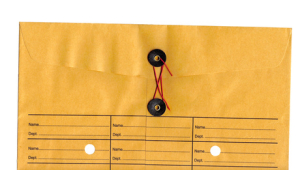 If you’re old enough to remember the inter-office memo, imagine if we managed memos the way most of us manage email. We’d need avalanche safety ratings in the office due to the piles and piles of paper we would amass — we send far more emails that we ever sent memos. So what can we learn from the old school paper memo?
If you’re old enough to remember the inter-office memo, imagine if we managed memos the way most of us manage email. We’d need avalanche safety ratings in the office due to the piles and piles of paper we would amass — we send far more emails that we ever sent memos. So what can we learn from the old school paper memo?
Apply these five strategies and you’ll find that your emails are better read, understood and responded to with greater efficiency and effectiveness.
1) Action Subject Line
Before the subject of the email, include what action is needed. This helps the receiver prioritize and respond faster. For Example:
• “For Approval – Budget 2015”
• “Response Required – Marketing Initiative”
• “For Review Only – Monthly Sales Report”
• “Urgent Action – Sales Conference Decision”
2) Subject Headings
Within the email, include subject headings for every issue/action being presented. If you’re sending an update or have several questions that need responding, cluster the topics under bold subject headings. For example:
• Budget Questions
• Team Member Roles
• Direction on Next Steps
3) Bullet Points
Underneath your clearly outlined subject headings, use bullet points to share information or use numbers to list the questions being asked.
• Bullet and number lists are easier for our now-tiny attention spans to comprehend.
• Bullet points outline information more clearly than a rambling narrative.
• Remember – just the facts, ma’am.
4) Response Date
When do you need a response? We often fail to add this vital piece of information and then get testy when people don’t get back to us quickly.
• Including a response date eliminates the reply email asking, “When do you need this by?”
• Eliminating unnecessary responses lightens your email load.
5) Strategic Recipient List:
Make strategic use of the “To”, “Cc”, and “Bcc” address lines:
• “To”: used to address anyone who needs to read and respond to your email
• “Cc”: used to address anyone who needs to read and be aware of your email. They are included in the “Reply All”, but they do not weigh into the conversation, keeping the email exchanges more manageable.
• “Bcc”: used to address anyone who needs to read and/or be aware of your email but does not need to be engaged in the responses
Thanks old-school memo. I miss you (but not the paper cuts).
If you’ve got ideas for email efficiencies and effectiveness, please share them!
Empowering change agent, Maureen “Mo” Douglas, practices powerfully positive public, workplace and leadership engagement. Click here for Mo’s FREE e-Guide to Better Public Engagement. Follow her on Twitter.

